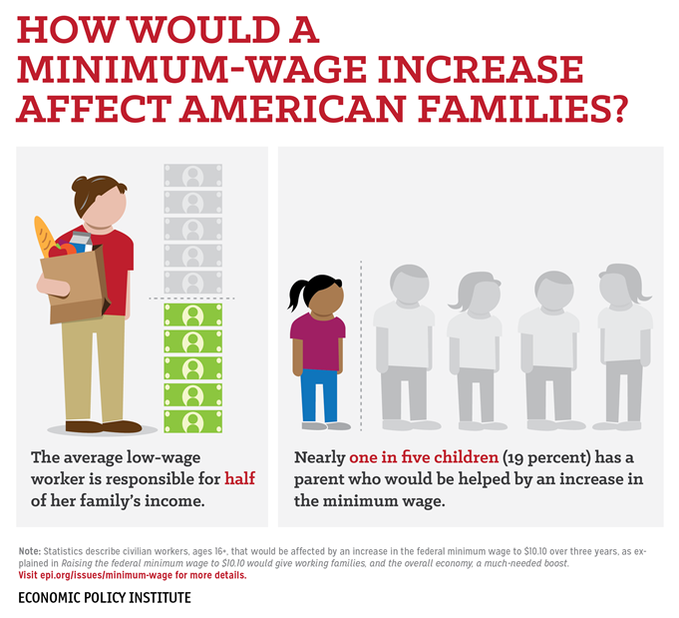Raising the minimum wage to $15 by 2024 would lift wages for 41 million American workers
Introduction and executive summary
The federal minimum wage was established in 1938, as part of the Fair Labor Standards Act (FLSA), to help ensure that all work would be fairly rewarded and that regular employment would provide a decent quality of life. In theory, Congress makes periodic amendments to the FLSA to increase the federal minimum wage to ensure that even the lowest-paid workers benefited from broader improvements in wage and living standards.
Yet for decades, lawmakers have let the value of the minimum wage erode, allowing inflation to gradually reduce the buying power of a minimum wage income. When the minimum wage has been raised, the increases have been too small to undo the decline in value that has occurred since the 1960s. In 2016, the federal minimum wage of $7.25 was worth 10 percent less than when it was last raised in 2009, after adjusting for inflation, and 25 percent below its peak value in 1968.
This report begins by providing historical context for the current value of the federal minimum wage and the proposed increase to $15 by 2024. It then describes the population of workers likely to receive higher pay under an increase to $15 by 2024, with detailed demographic data that refute a number of common misconceptions about low-wage workers. The report concludes with a discussion of the provisions of the Raise the Wage Act that would index the minimum wage to median wages, and gradually eliminate the subminimum wage for tipped workers.
This report finds that:
- A $15 minimum wage in 2024 would undo the erosion of the value of the real minimum wage that began primarily in the 1980s. In fact by 2019, for the first time in over 50 years, the federal minimum wage would exceed its historical inflation-adjusted high point, set in 1968.
- Gradually raising the minimum wage to $15 by 2024 would directly lift the wages of 22.5 million workers. On average, these low-wage workers would receive a $3.10 increase in their hourly wage, in today’s dollars. For a directly affected worker who works all year, that translates into a $5,100 increase in annual wage income, a raise of 31.3 percent. Another 19.0 million workers would benefit from a spillover effect as employers raise wages of workers making more than $15 in order to attract and retain their workforces.
- All told, raising the minimum to $15 in 2024 would directly or indirectly lift wages for 41.5 million workers, 29.2 percent of the wage-earning workforce.

